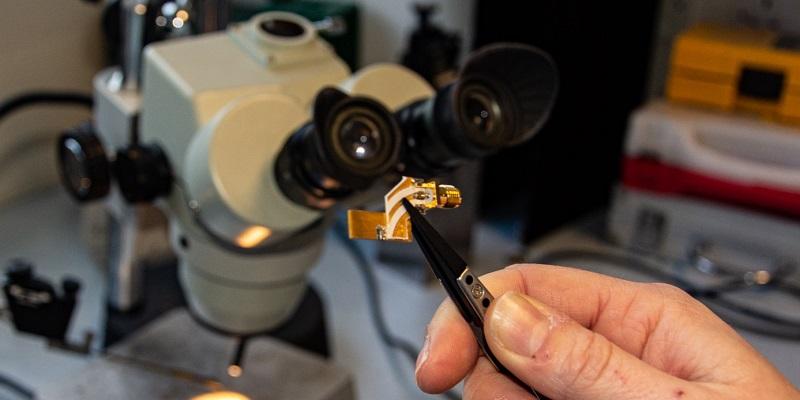
Terahertz quantum cascade lasers have the potential to carry massive amounts of data at speed. To do so, however, they require modulation rates of around 100 billion times per second. Until now, scientists have been unable to find a method of doing this. The new research, conducted by engineers and physicists from the universities of Leeds and Nottingham, used sound waves to create vibrations that led to the desired rates of modulation.
Graphene amplifier taps into elusive terahertz gap
“At the moment, the system for modulating a quantum cascade laser is electrically driven – but that system has limitations,” said John Cunningham, Professor of Nanoelectronics at Leeds’ School of Electronic and Electrical Engineering.
“Ironically, the same electronics that delivers the modulation usually puts a brake on the speed of the modulation. The mechanism we are developing relies instead on acoustic waves.”
The researchers used acoustic waves to vibrate quantum wells inside the laser, where electrons cascade down through these wells causing photons to be emitted. The acoustic waves were generated by the impact of a pulse from another laser onto an aluminium film. This caused the film to expand and contract, sending a mechanical wave through the quantum cascade laser. The research is published in Nature Communications.
“Essentially, what we did was use the acoustic wave to shake the intricate electronic states inside the quantum cascade laser,” said Tony Kent, Professor of Physics at Nottingham. “We could then see that its terahertz light output was being altered by the acoustic wave.”
So far, the team has only been able to exert a small amount of influence over the terahertz light, but it is hopeful that further work could lead to the level of control required for data encoding. If successful, the team believes the breakthrough could lead to a new generation of superfast data transfer satellites and Li-Fi devices.
“We did not reach a situation where we could stop and start the flow completely, but we were able to control the light output by a few per cent, which is a great start,” Professor Cunningham said.
“We believe that with further refinement, we will be able to develop a new mechanism for complete control of the photon emissions from the laser, and perhaps even integrate structures generating sound with the terahertz laser, so that no external sound source is needed.”




Glasgow trial explores AR cues for autonomous road safety
They've ploughed into a few vulnerable road users in the past. Making that less likely will make it spectacularly easy to stop the traffic for...